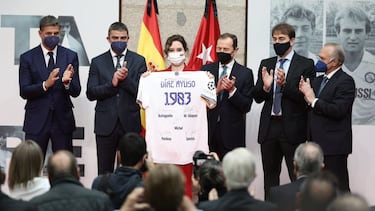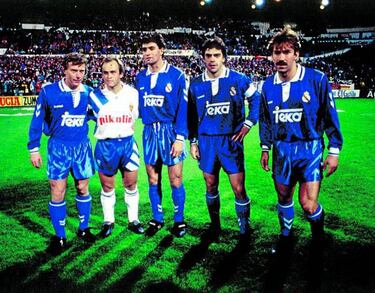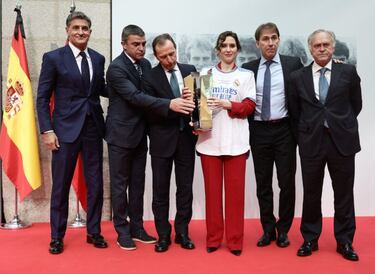Madrid president Isabel Díaz Ayuso recognises Real Madrid’s Quinta del Buitre
The President of the Community of Madrid in Spain, currently at the centre of a political storm, recognised the famous Madrid players of the 80s.

During the Spanish Transición, the transition to democracy, that period after the death of Franco and the end of the dictatorship, us inhabitants of Madrid, los madrileños, had reason to feel lost. The process of dividing the country into autonomous regions was a festival for regional identities, for some recognising a feeling they’d always had, for others discovering one they’d never suspected they had. But in everywhere across the country there was something to rally round: a historical event, a famous individual, a flag. In that festival of identities, Madrid, by default, was a zone of civil servants who’d come from all over the country, an old Manchego town with no other individual identity than having been chosen one day as the capital by a Spanish Habsburg, Phillip II, because it had good hunting grounds close by.
Madrid's Quinta del Buitre were part of the glorious 80s
Related stories
They didn’t even want us in Castilla-La Mancha and we reluctantly had to create our own autonomous region. But maybe that’s why we fell in love our lands with a new-found affection. Those were the days of La Movida (the cultural blossoming that occurred in Madrid in the 80s, with the shackles of the dictatorship thrown off), the 12 rules of city life by Madrid Mayor Enrique Tierno Galván in old Castilian, of the splendour of Las Ventas bullfighting ring, with Antoñete as the main character… and of the Quinta del Buitre (the Vulture’s Cohort), a group of players, four of them from Madrid, just like Antoñete, who form part of the memory of one Madrid’s happiest epochs. The desire to head into the Bernabéu on those European nights where they faced the challenge of coming back from a first leg thumping had never been seen before nor has it been seen since.

A group of footballers Madrid needed, and loved
It’s often said, lightly, that football has no memory. But it does. At the end of their days the footballers weren’t treated well, when after so many years they'd become too well known and it only got worse as their performances declined, but once they’d retired the memory of them became legend. La Quinta played a generous, artistic brand of football that filled the city with light, a city that needed them and loved them. Now, the Community of Madrid has made the good move of giving them a recognition which, at the same time, offers a nod to happier times in these sad days for our political institutions. It’s been 35 years, but it’s great to see them there, fresh and fit, once again galloping to the rescue.



